How to form blue rock salt in nature, The original blue rock salt is more than 200 million years old, extracted from the mines of Iran, direct purchase from the mine in Iran.
Halite is the name of a mineral composed of sodium chloride (NaCl) and a substance that is generally known as rock salt. Halite is often found in sedimentary rocks formed by the evaporation of sea water or saline lake water. This mineral is usually colorless or white, but depending on the inclusions of other substances, various elements, and structural or isotopic defects in the crystals, it may also be light blue, dark blue, purple, pink, red, orange, yellow, or gray.
Iran’s blue halite salt is very rare, which is exported from Iran to all over the world. There are different types of blue salt rock, which are divided according to the intensity of their blue color.
In addition to blue salt rock in Iranian mines, there is also crushed blue rock, which has a lower price than blue salt rock and its abundance is also greater.
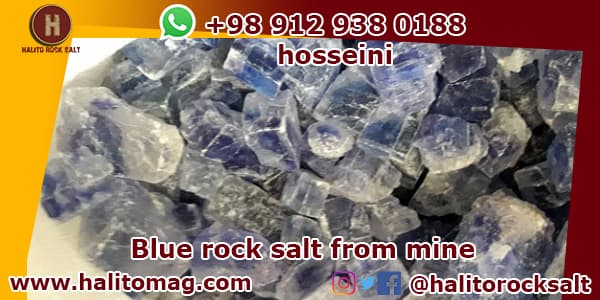
Before starting the expert discussions, there are some points that you need to know about eating these types of salts:
- Are colored salts useful?
- Does blue salt have higher properties than common salts?
- What is the cause of blue halite color?
- Geometry and color distribution of blue halite
Are colored salts useful?
In 2016, the Swiss Federal Food Safety and Veterinary Office (FSVO) conducted an extensive study of 25 different types of salt from around the world. “This was the first time we were investigating this type of food,” explains FSVO public relations officer Eva van Beek. Due to the speed of information dissemination, today many people around the world are familiar with natural salts. In fact, natural salts are the same salt that our ancestors used, and refined salt is the salt that is approved by international organizations. And they are not very useful for health.
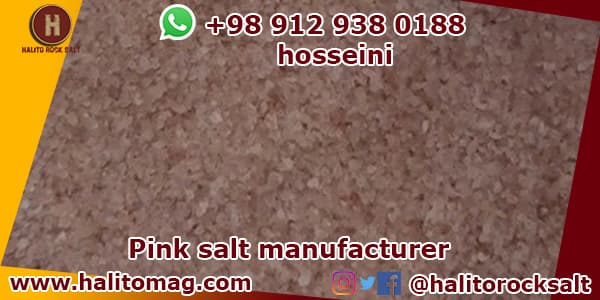
Iranian pink salt
It is interesting to know that Himalayan salt contains significant amounts of iron, which justifies its pink color. However, it is insoluble in the form of iron oxide, so it is difficult for the body to absorb this mineral. Consequently, the FSVO believes that Himalayan salt cannot be considered a good nutritional source of iron. Codex Alimentarius and FAO and World Health Organization (WHO), recipes containing standards and references related to the degree of quality of salt in terms of food under the title “Essential compounds and quality factors”, this document specifies that the sodium chloride content of food salt “It should not be less than 97% on a dry matter basis, without additives”. The content of sodium chloride in some types of uncommon salts is only 94% or even 88% in some cases.
Pink Himalayan salt is prohibited from entering some countries due to its high iron content, but Iranian pink salt has less iron content, and for this reason, its pink color is less than that of Pakistani pink salt, and it is more suitable for food consumption.
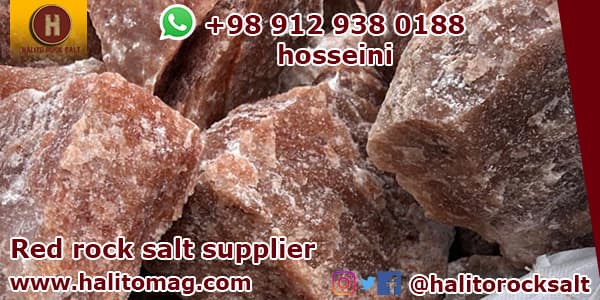
Does blue salt have higher properties than common salts?
Iranian blue rock salt is an exception: it contains relatively high amounts of potassium, so that 5 grams of this salt covers a quarter of our daily needs. Apparently, the amount of potassium is directly related to the intensity of its blueness.
In a research in 2007, it was said that Iranian blue salt can contain up to 7.42% potassium. “It’s also important to eat more [potassium-rich] foods, such as fruit and vegetables, to help minimize the impact of sodium intake on blood pressure,” advises Professor Andrew Mente.
Regarding potassium, it is good to know that potassium is also found in many cheaper foods. But what is clear is that blue salt is better than normal salt for those who have heart problems. You should be careful, those who are prohibited from consuming potassium in their diet should not use this blue salt.
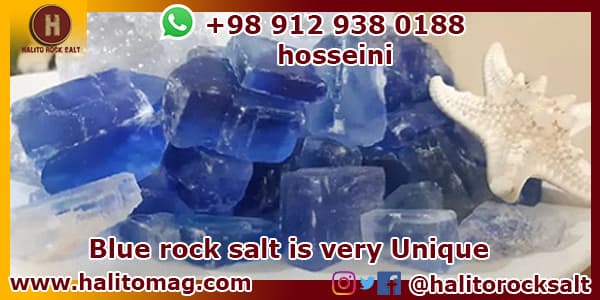
Properties of blue rock salt
Typically blue and purple (to purple) halite occurs in direct contact with relatively pure sylvite (which is usually milky white). Sylvite (KCl) contains a small amount of the natural isotope that is released slowly over time. This radiation is the very small amount of radiation that our body is exposed to even by eating bananas, so it is not harmful to humans. It is interesting to know that the color of blue salt can change with heating.
In the discussion of blue salt, the defect created by the color center F (F-center) affects the way the light beam passes/reflects from a part of the material, which causes visible color in the visible spectrum for us. In this case, the F color center produces a yellow to brown color in the halite
Second, some of the free electrons combine with positively charged sodium ions (Na+) to produce elemental sodium (Na). The elemental atoms of sodium metal are attracted to each other to form groups or colloids, which give the blue color in halite. Color saturation is related to radiation exposure, so dark halite has either been exposed to higher doses of radiation (closer to sylvite) or has been exposed to radiation for a longer period of time.
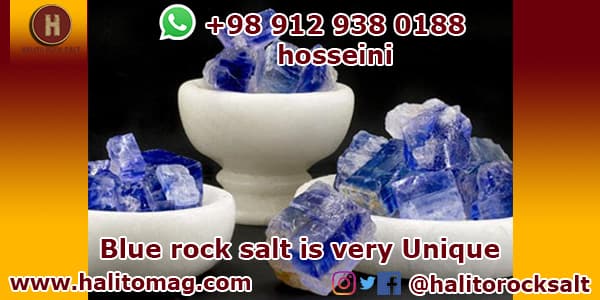
Geometry and color distribution of blue halite
Color distribution geometry is another interesting aspect of halite in other regions around the world, including Semnan and New Mexico, and their color mechanisms are poorly understood. Previous studies have attempted to explain what causes the color at the atomic level, but have been largely unsuccessful due to the unstable nature of halite when subjected to advanced analytical techniques.
For example, halite is simply vaporized when exposed to an electron beam (by an electron microprop instrument). However, although there are a few color zonings that we can infer based on crystallography and solid solution series, other color distributions are much more problematic when trying to figure out what is going on.
Color zoning often forms in bands (or zones) that occur along the cubic (and sometimes octahedral) growth planes of halite crystals. This phenomenon may have a relatively simple explanation:
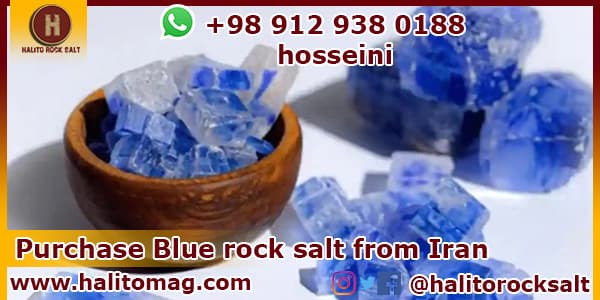
crystallography controls color zoning based on the existence of a series of solid solutions between halite and sylvite. Rarely in nature do we get an end member of a pure mineral or crystal. What we often see are compositional changes (solid-solution series), due to the substitution of one ion for another in isostructural minerals with the same basic chemical formula.



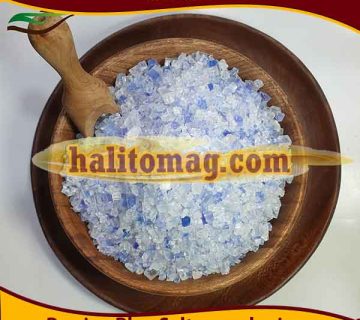

No comment